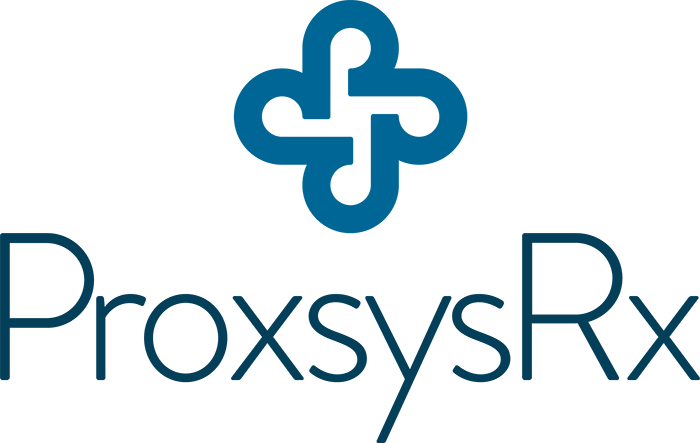The impact of medication non-adherence on hospital readmissions
We’ve reported the following elsewhere in this forum, but it bears repeating: Statistics indicate that up to 70% of all preventable outpatient readmissions are due to prescription non-compliance. Making matters worse for hospitals, the analytics generated by ProxsysRx’s proprietary software indicate that readmissions from prescription non-compliance are often significantly more expensive than other readmissions.
In short, retail pharmacies that effectively improve outpatient medication compliance, post-discharge, can have a profound impact on outcomes. Moreover, by significantly reducing readmissions, pharmacies can dramatically improve hospitals’ value-based healthcare performance ratings.
All of which leads to the question: Which is more effective for tracking and ensuring outpatient medication compliance: Technology or Personal Contact?
Medication-Tracking Software: Overview
It’s likely that the growing popularity of telehealth integration and health tracking apps will continue to drive the development and expansion of apps aiming to improve medication adherence and remind patients about prescription refills like a retail pharmacy program would.
In 2020, according to a Deloitte survey, 42% of US consumers used some kind of app to track their health goals. Moreover, about half of those users shared data with their doctors. The core function of medication alert software is, of course, to schedule medication intake — with programmed reminders that prompt patients according to their schedules.
Some medical management apps can also be integrated with e-prescribing systems. In theory, these apps have the potential to eliminate many errors associated with prescription drug use. In practice, it’s a different matter entirely — and the primary problem isn’t cost.
A brief online search for the costs of medication compliance software indicate that solutions can cost anywhere from Free to $49.99 monthly for patients — and as low as $4 per-user monthly for pharmacies.
According to a 2021 study by the Journal Of Managed Care + Specialty Pharmacy, medication management software with Text Messaging reminders increased compliance among patients with chronic diseases by an average of 35.6%. That’s an impressive increase, to be sure. However, the study notes, “More than 50% of smartphone users refused to use an app because they feared their personal information would be compromised” — which would place the total increase, at best, at 17.4%. Practically speaking, the rate of refusal among smartphone users means that any pharmacy using medication-tracking software would be required to manage the majority of its patient follow-up with person-to-person contact.
Maintaining records for a hybrid app-driven / person-to-person patient-tracking program would likely contribute to more than a little confusion for the professionals involved. All of which points to the primary issue for health systems weighing the comparative benefits of an app-driven vs. person-to-person patient tracking: Namely, the potential for positively impacting both patient outcomes and health system ROI.
Benefits of Calling Patients After Discharge
A post-discharge follow-up calling program is an essential component of maximizing outpatient outcomes. A genuinely effective program involves multiple steps — including 1) assistance in making any necessary appointments, 2) thoroughly discussing prescription protocols, to ensure patients and their caregivers understand their own responsibilities, and 3) ensuring there are no potential interactions with patients’ existing medications. At ProxsysRx, our program calls for ten “touches” during the first 30 days post-discharge.
How effective are outpatient calling programs?
Some studies have shown that patients receiving discharge phone calls are 23% less likely to be readmitted within 30 days of discharge. At the same time, results can be much higher. For instance, in a single Mississippi-based health system, ProxsysRx’s outpatient pharmacy filled over 18,000 discharge prescriptions — while managing patient follow-up — in its first 12 months of service. During that time, the hospital’s medication-related readmissions decreased 79%.
How To Conduct Post-Discharge Follow-Up Calls
First, calls should be conducted by well-trained members a pharmacy’s staff. Callers should allow patients time to explore any questions and concerns they (as well as their caregivers and/or family members) might have. Callers should also review each patient’s ongoing health status, as well as plans of action in case problems or complications arise.
Throughout follow-up calls, it’s important to confirm that the person(s) you are speaking with understands what you are discussing.
All that said, by demonstrating your genuine concern for patients’ well-being, follow-up calling offers your health system another critical benefit: It’s an excellent way to ensure, and improve, their satisfaction with your health system.
How Can ProxsysRx, A Retail Pharmacy Program Benefit Your Patient-Tracking Goals?
There are so many ways to implement effective patient follow-up programs. For more information, contact Howard Hall. C: 214.808.2700 | howard.hall@proxsysrx.com
![]()


